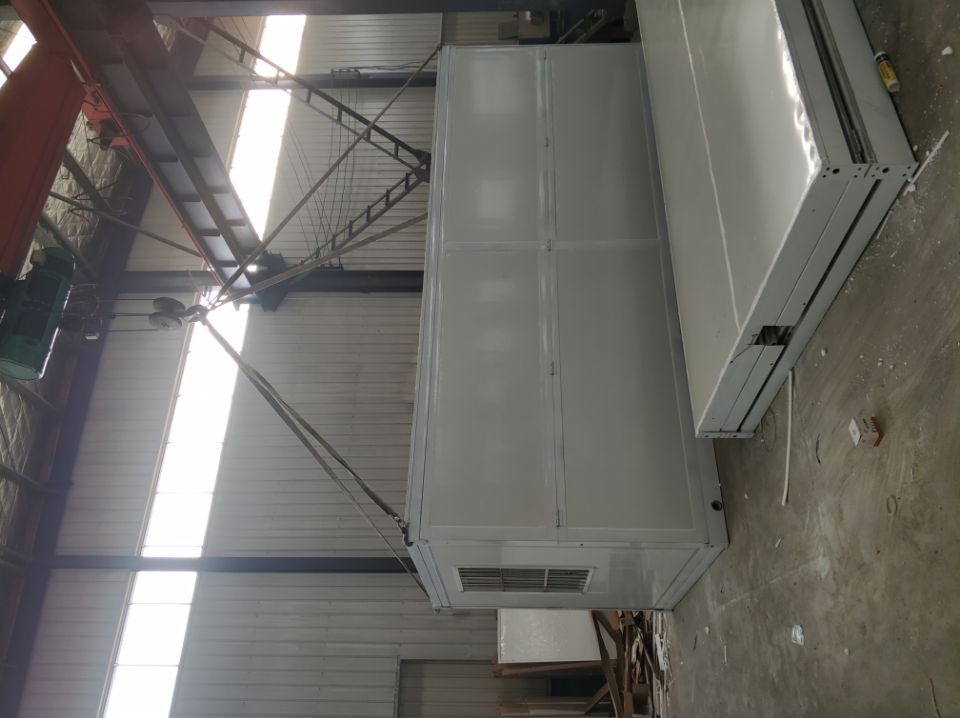Innovative material application of steel structures in construction.
Table of Contents
Advantages of Using High-Strength Steel in Building Construction
Steel has long been a popular material in the construction industry due to its strength, durability, and versatility. In recent years, advancements in technology have led to the development of high-strength steel, which offers even greater benefits for building construction. This innovative material application of steel structures has revolutionized the way buildings are designed and constructed, providing numerous advantages for architects, engineers, and builders alike.
One of the primary advantages of using high-strength steel in building construction is its superior strength-to-weight ratio. High-strength steel is able to support heavier loads with less material, allowing for lighter and more efficient building designs. This not only reduces the overall weight of the structure but also minimizes the amount of steel required, resulting in cost savings and environmental benefits.
In addition to its strength, high-strength steel also offers improved ductility and toughness, making it more resistant to extreme weather conditions, seismic activity, and other external forces. This increased resilience ensures that buildings constructed with high-strength steel are better equipped to withstand the test of time and remain structurally sound in the face of unforeseen challenges.
Furthermore, high-strength steel is highly versatile and can be easily customized to meet the specific needs of a project. Its malleability allows for complex shapes and designs to be achieved, giving architects and designers greater creative freedom in their building concepts. This flexibility in design not only enhances the aesthetic appeal of a structure but also improves its functionality and performance.
Another key advantage of using high-strength steel in building construction is its sustainability. Steel is one of the most recyclable materials in the world, with a high recycling rate that helps reduce the demand for new raw materials and minimizes waste. By incorporating high-strength steel into construction projects, builders can contribute to a more sustainable and environmentally friendly industry, while also benefiting from the long-term durability and longevity of the material.
Moreover, high-strength steel is easy to work with and can be prefabricated off-site, allowing for faster and more efficient construction processes. This not only reduces labor costs but also accelerates project timelines, enabling buildings to be completed in a shorter amount of time. The speed and efficiency of high-strength steel construction make it an attractive option for developers and investors looking to maximize their return on investment.
Overall, the innovative material application of high-strength steel in building construction offers a wide range of advantages that make it an ideal choice for modern construction projects. From its superior strength and durability to its versatility and sustainability, high-strength steel provides numerous benefits for architects, engineers, builders, and building owners alike. As technology continues to advance and new materials are developed, high-strength steel will undoubtedly remain a key player in the construction industry, shaping the future of building design and construction for years to come.
Sustainable Design Strategies for Steel Structures in Construction
Steel has long been a popular material in construction due to its strength, durability, and versatility. However, in recent years, there has been a growing emphasis on sustainability in the construction industry, leading to the development of innovative material applications for steel structures. These new approaches not only enhance the environmental performance of steel buildings but also offer unique design opportunities for architects and engineers.
One of the key sustainable design strategies for steel structures is the use of recycled steel. By incorporating recycled steel into construction projects, builders can reduce the demand for virgin steel production, which is energy-intensive and contributes to greenhouse gas emissions. Recycled steel also helps to divert waste from landfills, making it a more environmentally friendly option for construction materials.
In addition to using recycled steel, another innovative material application for steel structures is the use of high-performance coatings. These coatings can help to extend the lifespan of steel buildings by protecting them from corrosion, weathering, and other forms of deterioration. By using high-performance coatings, builders can reduce the need for maintenance and repairs, ultimately saving time and money in the long run.
Furthermore, the use of prefabricated steel components is another sustainable design strategy that is gaining popularity in the construction industry. Prefabrication allows for greater precision and efficiency in the construction process, resulting in less waste and a reduced environmental impact. By prefabricating steel components off-site and assembling them on-site, builders can minimize disruption to the surrounding environment and reduce the overall carbon footprint of the project.

Another innovative material application for steel structures is the use of composite materials. By combining steel with other materials such as concrete, wood, or glass, architects and engineers can create unique and visually striking designs that are both functional and sustainable. Composite materials offer a high strength-to-weight ratio, making them ideal for use in high-rise buildings, bridges, and other structures where weight is a critical factor.
Moreover, the use of green roofs and living walls on steel structures is another sustainable design strategy that is gaining traction in the construction industry. Green roofs and living walls help to reduce the heat island effect in urban areas, improve air quality, and provide habitat for wildlife. By incorporating these features into steel buildings, builders can enhance the overall sustainability of the project and create a more environmentally friendly built environment.
In conclusion, the innovative material applications for steel structures in construction are helping to push the boundaries of sustainable design in the industry. By using recycled steel, high-performance coatings, prefabricated components, composite materials, and green roofs, architects and engineers can create buildings that are not only strong and durable but also environmentally friendly and visually appealing. As the demand for sustainable construction practices continues to grow, it is clear that steel will remain a key player in the future of sustainable design strategies for the built environment.






